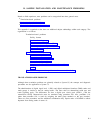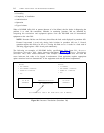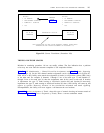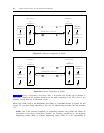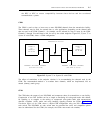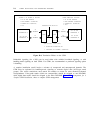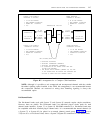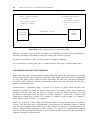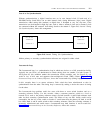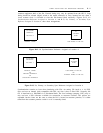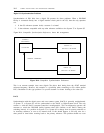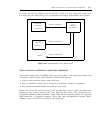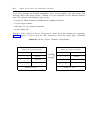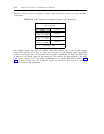
SAMPLE INSTALLATION AND MAINTENANCE PROBLEMS
B-9
Loss of or No Synchronization
Without synchronization, a digital interface runs on its own internal clock. If both ends of a
DS1/DMI facility (both DS1s) run on their internal clock, timing differences (slips) occur. Digital
transmission, either analog data (modem) or digital data, is disrupted at very low slip rates. Voice
transmission can be disrupted at high slip rates, such as when a stratum-4 clock and a stratum-2 clock
are connected without the stratum-4 clock being slaved to the stratum 2. Figure B-9, Internal Timing
(No Synchronization), shows this arrangement.
DS1 OR DMI
INTERFACE
LOCATION A
DS1 OR DMI
INTERFACE
LOCATION B
Figure B-9. Internal Timing (No Synchronization)
Neither primary or secondary synchronization references are assigned in either switch.
Leavenworth Loop
The Leavenworth loop is a synchronization loop in which two devices on a DS1 transmission facility
(typically the two DS1s) are administered to obtain timing from one another. For both System 75
and System 85, this condition renders the transmission facility unusable, and, for System 85, can
result in loss of dial tone and apparent time-multiplexed switch (TMS) failures. Figure B-10,
Leavenworth Loop on the Primary Reference, shows the Leavenworth loop (timing loop) problem.
In this example there is no master reference. Each switch has been administered to take its
synchronization from the other. The timing loop is removed by making a device the source of timing
for the other.
The Leavenworth loop problem could also occur with three or more switch locations and on a
secondary reference facility. For this scenario, either a customer premises switch or a local or
network CO is used as the primary reference (master). Switch locations A and B both reference each
other for their secondary synchronization source. The failure of any one DS1 facility would not be
catastrophic; but the loss of the switch at location C would mean that the primary for both A and B
has failed. Both A and B would switch to their secondary reference. Since the secondary reference is
incorrectly administered and would create a Leavenworth loop, both locations A and B would fail.
Figure B-11, Leavenworth Loop on the Secondary Reference, shows this scenario.



